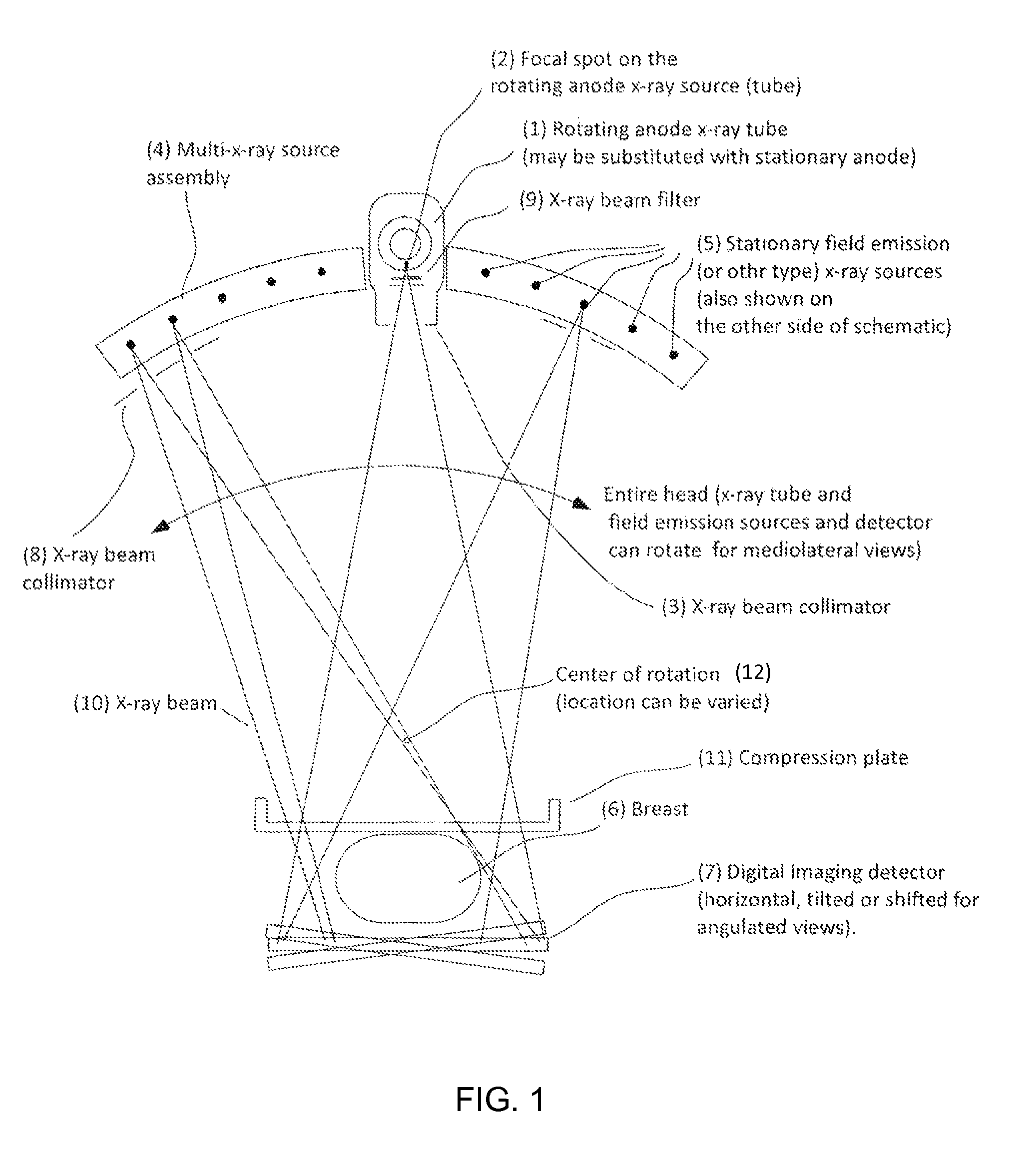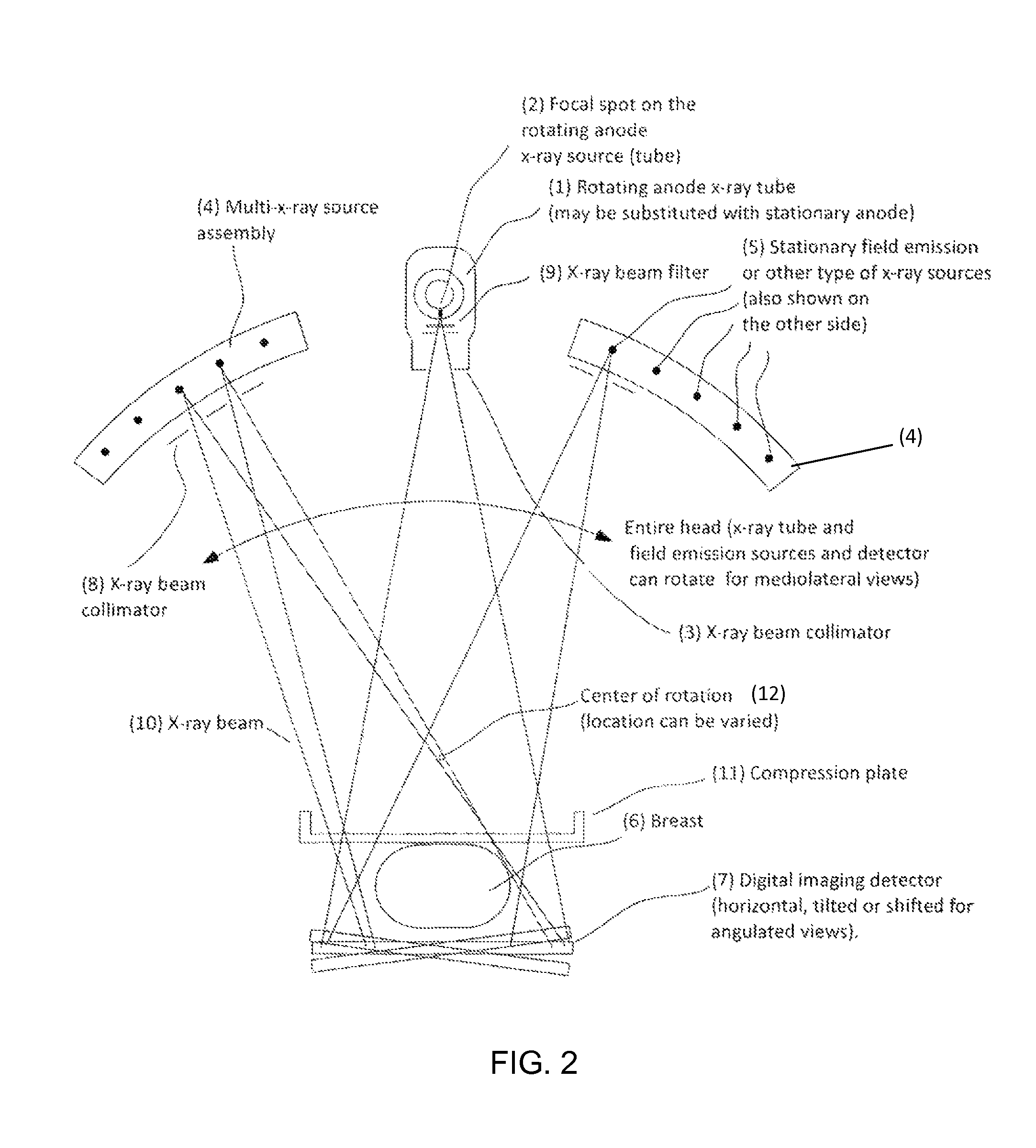Tomosynthesis imaging
a technology of tomosynthesis and imaging, applied in the field of xray-based imaging systems and methods, can solve the problems of increasing patient discomfort, physical movement, and increasing the time of image acquisition, and achieve the effect of reducing the fluence rate of x-rays and high x-ray fluence ra
- Summary
- Abstract
- Description
- Claims
- Application Information
AI Technical Summary
Benefits of technology
Problems solved by technology
Method used
Image
Examples
Embodiment Construction
Combined Digital Mammography with High Speed Tomosynthesis
[0058]We describe a method for tomosynthesis imaging that uses a number of x-ray sources positioned on each side (or only on one side if desired) of the conventional central x-ray tube. This preferred embodiment enables fast tomographic image acquisition for tomosynthesis and for stereoscopic x-ray imaging. Image acquisition parameters (kVp, target / filter, mAs), either individually or in combination, can be varied with projection angle during acquisition of the (n+1) projections. We refer to such variation of operating parameters as angle adaptive beam modulation (AABM).
[0059]In order to overcome the limitations of prior art systems, it is desirable and advantageous to have a series of spatially fixed x-ray sources in an arc path that can activate sequentially or in any desired order to cover the desired angle of exposure in the shortest possible time.
[0060]We describe a system that is expected to be fully capable of operatin...
PUM
 Login to View More
Login to View More Abstract
Description
Claims
Application Information
 Login to View More
Login to View More - R&D
- Intellectual Property
- Life Sciences
- Materials
- Tech Scout
- Unparalleled Data Quality
- Higher Quality Content
- 60% Fewer Hallucinations
Browse by: Latest US Patents, China's latest patents, Technical Efficacy Thesaurus, Application Domain, Technology Topic, Popular Technical Reports.
© 2025 PatSnap. All rights reserved.Legal|Privacy policy|Modern Slavery Act Transparency Statement|Sitemap|About US| Contact US: help@patsnap.com



